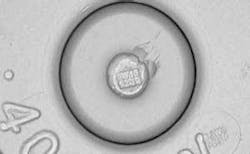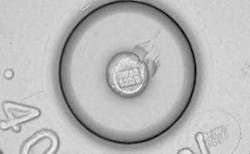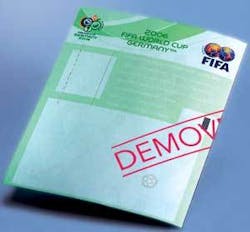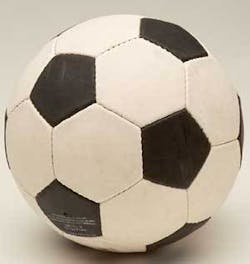Fighting crime with laser engraving
Sacramento, CA-On September 10 the California Assembly passed legislation that is expected to provide police with an important tool in solving gun crimes and apprehending armed criminals-the Crime Gun Identification Act of 2007 (AB 1471). The California Senate approved the measure on September 6. AB 1471 requires that all new models of semiautomatic handguns are microstamped with their make, model, and serial number.
Microstamping uses UV lasers to engrave microscopic characters onto a gun’s firing pin and other internal surfaces. These characters transfer onto the cartridge casing when the handgun is fired. In instances of drive-by shootings, for example, where the only evidence at the crime scene may be a spent cartridge case, law enforcement could quickly obtain a critical lead.
Todd Lizotte, the Londonderry, NH-based inventor of microstamping, believes the technology has the potential to target those who illegally traffic firearms by providing immediate identification of a firearm the first time it is used in a crime, which has been identified by law enforcement as a major benefit. The “time to crime”-the time it takes from the time the firearm is first sold to when it is “identified” as used in a crime-is between 1 to 12 years, notes Lizotte. “By allowing law enforcement to identify the firearm without having to actually recover it,” Lizotte explains, “means they have a better opportunity to understand its history from the first point of sale. Current ballistic or firearm identification can not take place until the firearm is recovered.” In Los Angeles it has been estimated that nearly 50% of gun-related crimes are unsolved, where the only evidence is cartridge casings.
In fighting crime, law enforcement agencies employ techniques such as “link analysis” and “social networking,” which rely on identifying leads to connect people to events. By identifying through microstamping the first person who purchased the firearm, law enforcement can quickly assess if they are part of the criminal social network or, in the case of a stolen firearm, if the firearm was stolen by a known theft ring within the area. As for honest firearm owners, everything remains the same. No new bureaucracy is introduced; the same trace system is employed and all the information stays at the firearm manufacturer’s facility.
In response to arguments that microstamping would add significant cost to the manufacture of a handgun, Lizotte has agreed to make the technology available to the firearms industry royalty-free (the patented portion of the technology is held by ID Dynamics, Seattle, WA).
Governor Schwarzenegger has until October 14 to decide whether to sign, veto, or allow the bill to become law without his signature. Microstamping would be required on all new models of semiautomatic handguns sold in California after 2010. While California may be the first state to pass the microstamping legislation, Massachusetts and Rhode Island introduced similar legislation this year and the Maryland Police Department is promoting consideration there. Senator Ted Kennedy (D-MA) and Representative Xavier Becerra (D-Los Angeles) intend to introduce legislation to require microstamping on a Federal level.-LJB
Securing the World Cup
Germany-The FIFA World Championship in 2006, held here June 9 through July 9, drew exceptionally large crowds and placed a heavy burden of responsibility for safety and security on the organizers. Security measures for the event were strict to ensure that only persons holding valid access passes were able to enter the stadium or certain restricted areas. Event organizers turned to laser perforation to ensure the passes would be difficult to counterfeit.
Georg Kohl GmbH, specialists in providing ticketing and passes for major events, worked with engineers from Rofin to define a pattern of perforations on the pass-some of which would be easily visible to the eye and some of which would be more difficult to detect (see photo, left). These perforations increased the security features of the pass, as only the security staff would know of the presence and precise location of the holes.
The perforation pattern generated by the Rofin StarShape 300C laser was in the form of a soccer ball, with additional perforation holes and lines in the area of the pass that incorporated the owner’s photograph. The laser perforations in this area make it impossible to remove the original picture without damaging the parent material. A three-axis galvo head was used to cover the required working area for two passes of 300 x 300 mm. Even with this large working envelope, the laser produced perforated holes as small as 200 microns, and completed the perforation process for two tickets in one second.
The security level of these passes was so great that the German police were present during the production of the 50,000 passes that were required for the various stages of the championship.




